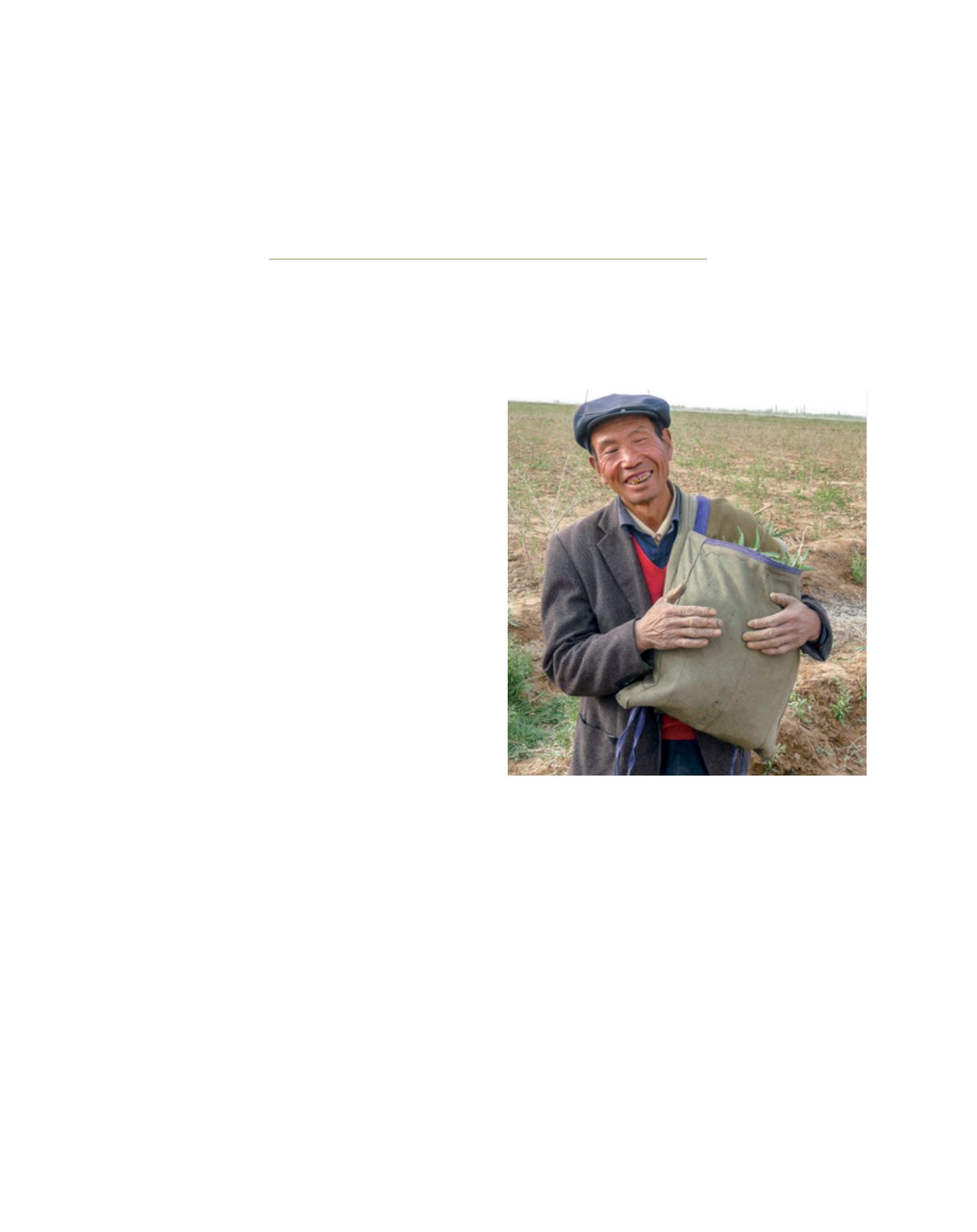

[
] 25
Combating desertification: introducing
integrated ecosystem management in the
People’s Republic of China
Frank Radstake and Bruce Dunn, Asian Development Bank, Manila, Philippines
1
T
he People’s Republic of China (PRC) is on the
frontline of combating one of the most important
global environmental challenges of the twenty-first
century — the growing degradation and desertification of
dryland ecosystems that cover more than 40 per cent of
the Earth’s land surface. More than a third of the world’s
population lives in dryland ecosystems. About 90 per cent
are citizens of developing countries. Many of them are
poor and primarily depend on land for their livelihood
and consumption.
In the PRC more than 250 million people, including several large
ethnicminorities, live in the dryland ecosystems that covermuch of
the northern and western regions of the country. The provinces of
Gansu, Qinghai, and Shaanxi and the autonomous regions of Inner
Mongolia, Ningxia Hui, and Xinjiang Uygur are the worst-affected
areas. These dryland ecosystems are home to approximately three-
quarters of the country’s rural poor, and house over 5,000 species
of wild animals and plants. Many rural people have benefited only
marginally from the country’s spectacular overall economic growth
over the past three decades. The economic loss caused by desertifi-
cation is reportedly estimated to be about 1.4 per cent of the PRC’s
annual gross domestic product (GDP) and over 23 per cent of the
annual GDP of themain affected provinces of Gansu, Qinghai, and
Shaanxi and the autonomous regions of Inner Mongolia, Ningxia
Hui, and Xinjiang Uygur.
2
The PRC Government has long recognized the potential
ecological, economic and social crises building in its dryland
areas. It can ill afford droughts, and it cannot allow more
vast tracts of its territory to be stripped by wind and water of
topsoil and productivity. The effects already spread beyond
the dryland ecosystems themselves. Distant cities as far away
as Japan have been affected by the more frequent and severe
dust storms that rise in north-west PRC and Mongolia.
The PRC also recognized that its past efforts, although
impressive, were hampered by an uncoordinated, piecemeal
approach. A wide variety of national government agencies
planned and carried out their own narrowly-focused activi-
ties with little or no consultation. Conflicts arose between
the responsibilities, priorities, goals, methods and regulations
of the institutions involved. They also duplicated efforts and
wasted resources. This lack of cohesion diminished the impact
of the Government’s work.
Since the ratification of the United Nations Convention to
Combat Desertification (UNCCD) in 1997, the PRC has progres-
sively intensified its efforts to combat land degradation as a matter
of national priority. In 2002, the Asian Development Bank (ADB)
agreed to a lead role to support the PRC to rethink, restructure
and strengthen its dryland management programme. Led by the
Ministry of Finance and the State Forestry Administration, the
Government’s decision to establish theGlobal Environment Facility
(GEF)-PRC Partnership for Combatting Land Degradation in
Dryland Ecosystems (the partnership) reflected the Government’s
growing commitment to addressing the country’s deepening prob-
lems. The partnership aimed at promoting good farming practices,
land preservation, and water and soil conservation with strategies
for rural development that reach, include and benefit the poor.
A 10-year country programming framework (2003-2012)
was prepared, introducing an effective integrated ecosystem
management (IEM) approach through a portfolio of new
A dryland farmer in Gansu province, one of the areas most
affected by desertification
Image: Frank Radstake
L
iving
L
and
















